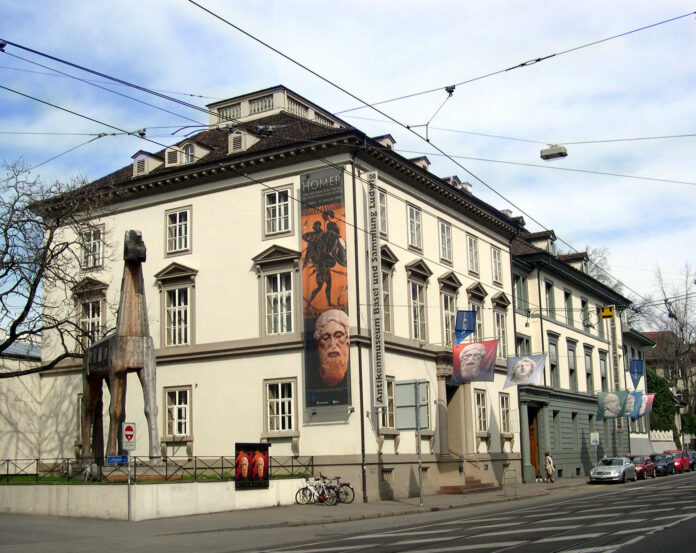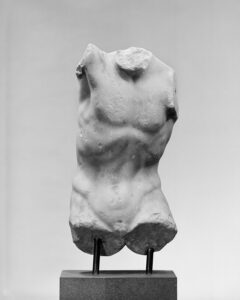
The renowned Antikenmuseum Basel is suspected of receiving stolen goods. The accusation from Italy startled Switzerland’s media outlets like a slap in the face and made them jump all over it in excitement. The venerable institution was not always presented in a good light by them.
At the centre of this whodunit is a Hercules statuette that the museum had lent to Italy for a special exhibition. The object did not return to Basel. A special unit of the Carabinieri seized it in December 2018, as has only now become known. The Swiss magazine “20 Minuten” quotes Peter Gill, spokesman for the Basel public prosecutor’s office: “The Italian judiciary has initiated criminal proceedings due to the suspicion of receiving stolen goods.” Eleven archaeological objects in the Antikenmuseum Basel were also seized “as part of a request for legal assistance from the Italian authorities” and must not be moved or relocated since, Gill stated. What happened?
Basel’s Problematic Heritage
By now, provenance research is the first item on the agenda of any institution. Was the object looted, obtained during the plundering of colonial rulers, purchased illegally or is there just a shadow of suspicion lingering over it? To figure it all out, you need to do a huge amount of research, and it is quite difficult to do so in times of austerity budgets.
And legislation did not always and everywhere care so much about transparency and moral correctness. Let’s remember: the UNESCO convention against the illicit trade of cultural property has only been around since 1970. And another 35 years passed by until Switzerland ratified the convention. (And if you consider that to be a long time: it was another 2 years until Germany ratified it in 2007…) One may be outraged by this but the fact is: until recently, Swiss museums were not obliged to do a lot of provenance research as there were not many national legal requirements either. And even in a rich country like Switzerland one does not assign staff to do research that is not absolutely necessary. As the director of the Antikenmuseum Basel, Andrea Bignasca told the Basler Zeitung in 2017, people were not indifferent about the origin of a purchased item in the past either. However, art dealers enjoyed great authority in those days and, in turn, believed their suppliers. “The focus was on art, the preservation of cultural heritage, its study and presentation”, Bignasca said. However, the world has changed.
Italy is particularly eager to recover cultural items that were supposedly exported illegally. A simple but effective and feared method: objects that come to the country, as a loan for instance, are confiscated. Or Italy requests legal assistance from a specific country, for example, if they spot pieces in auction catalogues that appear to be suspicious from the Italian point of view.

Are the Carabinieri Infallible?
This is not the first time that the Carabinieri’s special department for the protection of cultural assets has targeted the Basel Antikenmuseum. However, even in the past, the Italians did not necessarily cover themselves in glory.
In the 1990s, the Carabinieri requested from Switzerland’s authorities the restitution of a boy’s torso from Palestrina. They claimed that the sculpture had been stolen from the museum in Lazio and accused the Basel museum of receiving stolen goods. German occupying forces had looted the valuable object during the Second World War, the Carabinieri said. The museum purchased the sculpture in Germany in the 60s and the dealer was able to prove that he had acquired the piece of art legally. There might be other possibilities as to why the piece was exported from Italy: perhaps it was sold to a German dealer or given as a “gift” from fascist functionaries to German “colleagues”. The torso is still in Basel today.

A New Beginning for the Basel Antikenmuseum?
So now it’s about a Hercules statuette, which was acquired in 1973 by the Foundation for the Promotion of the Antikenmuseum. Together with other items, the prominent work of art was sent to Turin to be displayed in an exhibition in the Reggia di Venaria and even made it onto the cover of the exhibition catalogue and the exhibition posters. While all other loans – contrary to what the Swiss media says – were returned without any problem, the Italian authorities confiscated the Hercules statuette. Shortly thereafter, they also had other objects confiscated in Basel by the public prosecutor’s office. For two and a half years, Rome has remained silent about the matter. Andrea Bignasca told CoinsWeekly: “So far, Italy has been unable to substantiate the accusations or provide evidence to support that our works were acquired illegally.”
On the one hand, the museum is almost helpless in the face of the bureaucratic machinery. However, there is also a positive development about all this. Regarding provenance research, Switzerland has a lot of catching up to do and is now taking action. In Basel, for instance, museums have dealt intensively with the subject of looted art in recent years. The institutions are fully aware of the importance of the topic, as Andrea Bignasca told us: “Since I took office in 2013, I have been in charge of provenance research within the museum and in collaboration with the commission of museums. When it comes to new acquisitions, donations or loans, we strictly adhere to the relevant legislation and the requirements of the international conventions of ICOM. In case of doubt – i.e. if there is not enough documentation to be sure that an object was purchased legally – we do not buy it and do not accept donations. So, we have been doing provenance research since I took office and within the scope of our personnel and financial possibilities for new acquisitions, loans and donations.”
Perhaps, the Carabinieri’s action even helped the Antikenmuseum Basel. As recently as in 2017, Bignasca complained in an interview about the fact that it was next to impossible to do research on the origin of the 10,000 objects that are part of the museum’s collection; there was a lack of staff and money. This has changed, as the director proudly told us: “We created a new position for provenance research to research the past of our items. It had been planned for a long time and now, thanks to private funding and internal savings, it can finally be realised.”
Don’t Trust Anyone Easily
What do we learn from the Basel case? The protection of cultural heritage is an international issue, and invoking national law does not always help these days. It takes a lot of tact and thick skin. While the Italian Carabinieri vigorously track down and confiscate all items that supposedly belong to Italy’s cultural heritage, Italian scholars in the museums are more interested in establishing a good relationship that is based on trust. Andrea Bignasca affirms, not without pride: “We have excellent relations and cooperation with Italian museums, most recently, masterpieces from Naples, Rome, Capua, Paestum and Pompeii travelled to Basel for our exhibition ‘Gladiator – The True Story’. This exhibition is now on display at the National Museum of Naples until the end of the year. And among the items, there are – nota bene – of course also objects from the Antikenmuseum Basel!” Curiously enough, overzealous protectors of cultural property seem to be working against their own museums … In order to maintain international cooperation in face of the bureaucratic problems caused by lengthy confiscations, Andrea Bignasca has meanwhile found pragmatic means: “When it comes to loan requests from Italy, in addition to the loan contract, we make sure that we request and receive an official guarantee form the Italian Ministry of Culture attesting that the object will be returned in a timely manner. Without this document, unfortunately, we can no longer send loans to Italy.”
You can find numerous articles on the subject Cultural Property Issues in our archive.
At least for German cultural property law, there is now a commented guide.
Here you can find the official website of the Antikenmuseum Basel.




